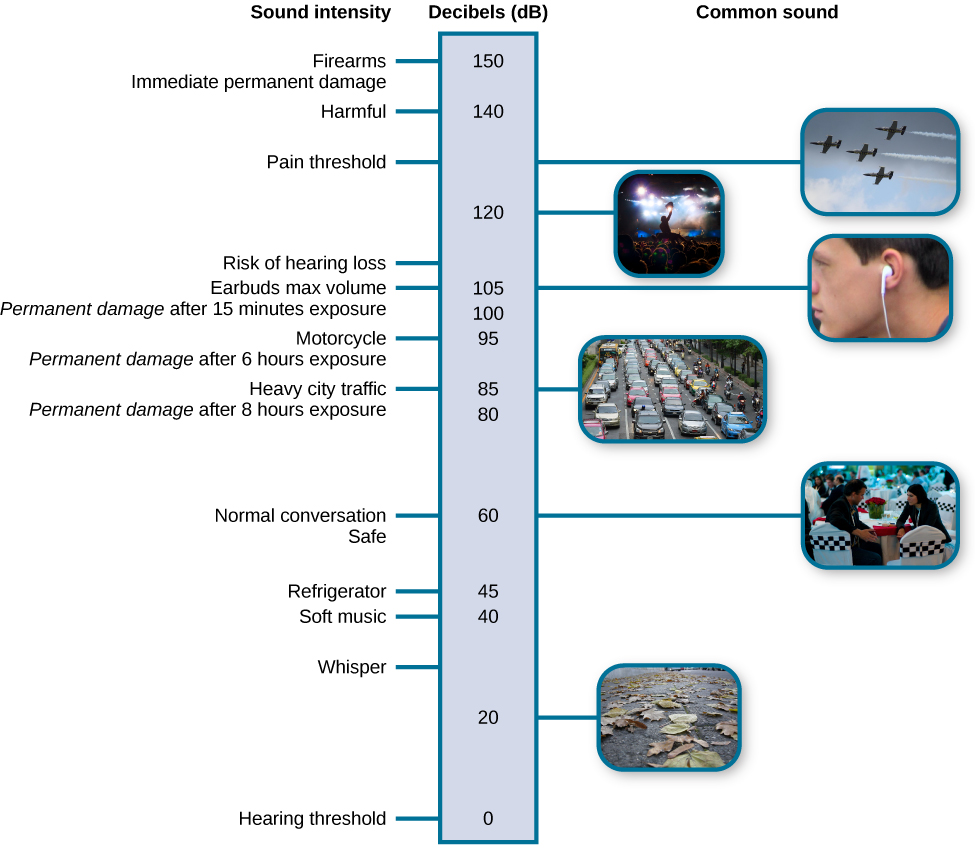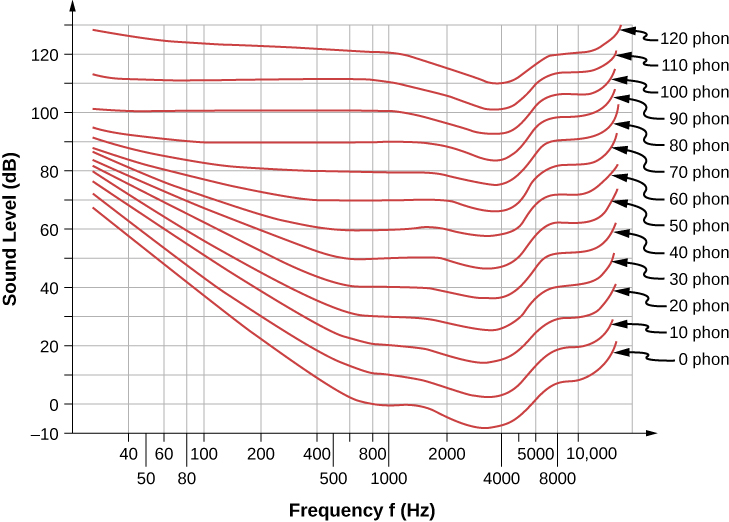The Mechanics of Hearing
47 Auditory Sensitivity Function
Learning Objectives
Be able to describe the frequency range of human hearing.
Know the range of frequencies at which human hearing is typically most sensitive.
Be able to explain the typical fundamental frequency of speech.

Like light waves, the physical properties of sound waves are associated with various aspects of our perception of sound. The frequency of a sound wave is associated with our perception of that sound’s pitch. High-frequency sound waves are perceived as high-pitched sounds, while low-frequency sound waves are perceived as low-pitched sounds. The audible range of sound frequencies is between 20 and 20000 Hz, with greatest sensitivity to those frequencies that fall in the middle of this range.
The unit of the loudness of sound is the decibel (dB). For example, an ordinary conversation is approximately equal to 60 decibels (dB), and a rock concert is approximately equal to 120 decibels (dB). These are all examples of different levels of sound loudness in daily life. The lowest of the human hearing range is approximately equal to a whisper at a distance of 5 feet. This level of sound loudness is almost the smallest sound in the acceptable range.

We are most sensitive to sounds in the range of 1,000 – 3,000 Hz, where important information in conversational speech tends to be. Musical notes occupy a smaller range, from about 28 Hz to just over 4,000 Hz. The voiced speech of a typical adult male will have a fundamental frequency from 85 to 180 Hz, and that of a typical adult female from 165 to 255 Hz. Thus, the fundamental frequency of most speech falls below the bottom of the voice frequency band.
Dogs can hear above 40,000 Hz; dolphins can hear up to 150,000 Hz. Additionally, chickens have a very limited audible range, from 125 to 2000 Hz. Mice have an audible range from 1000 to 91000 Hz, and the beluga whale’s audible range is from 1000 to 123000 Hz. Our pet dogs and cats have audible ranges of about 70–45000 Hz and 45–64000 Hz, respectively (Strain, 2004).

Strain GM. Deafness prevalence and pigmentation and gender associations in dog breeds at risk. Vet J. 2004 Jan;167(1):23-32. doi: 10.1016/s1090-0233(03)00104-7. PMID: 14623147.
License: CC-BY 4.0CC LICENSED CONTENT, SHARED PREVIOUSLY
OpenStax, Psychology Chapter 5.2 Waves and Wavelengths
Provided by: Rice University.
Download for free at: https://cnx.org/contents/Sr8Ev5Og@12.2:K-DZ-03P@12/5-1-Sensation-versus-Perception.
License: Creative Commons Attribution 4.0 Wikipedia, Voice Frequency
URL:https://en.wikipedia.org/wiki/Voice_frequency#:~:text=The%20voiced%20speech%20of%20a,frequency%20band%20as%20defined%20above.
License: CC BY SA 3.0

